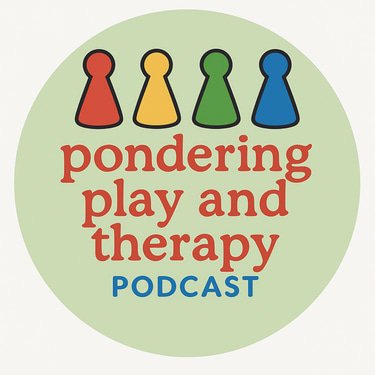Exploring Play and Symbolism in Therapy
In this week’s episode of Pondering Play and Therapy, Philippa and Julie dive into the fascinating world of play and symbolism in therapeutic practice. Julie begins by reflecting on her work as a child-centred play therapist, where symbolism is at the heart of what unfolds in the playroom. Children pour “hot chocolate” into a plastic cup, transform into roaring lions, or declare that a foam noodle is now a sword. These moments aren’t just imagination — they’re the child’s way of processing, expressing, and exploring inner experiences in a safe and contained way.
Philippa, with AI Assistance
10/3/20252 min read


Philippa contrasts this with her own practice in Theraplay, which often focuses on the primary relationship — the adult and child connecting through shared activities, eye contact, or simple games. Objects like cotton balls or balloons remain what they are, grounding the interaction in the here and now. Yet, as Philippa explains, symbolism can still appear: a child who struggles to accept nurture as themselves may curl up more easily as a “puppy,” finding safety and care through symbolic distance.
Both therapists discuss how symbolism offers children freedom. It allows them to express fierce, messy, or vulnerable parts of themselves without shame. A child who must always “mask” or be compliant in daily life may find release by becoming a tiger who lashes out, or a kitten who can finally receive gentle strokes. Symbolism becomes a bridge between lived experience and safe expression.
The conversation also touches on sand tray work. Julie and Philippa note how often children bury objects — stones, marbles, animals — over and over again. For some, this repetitive act holds powerful meaning: safety, hiding, loss, or trickery. Sometimes the objects themselves are important, other times it’s the relationship created in the act of hiding and revealing that carries the therapeutic weight.
Witnessing is another theme they explore. Whether in role-play, sand tray, or symbolic story, the therapist’s role is often to witness, validate, and gently name possibilities. A simple statement such as “sometimes it’s really hard for the puppy to be stroked” can give a child language and recognition for an inner experience they may never have voiced before.
Finally, Philippa and Julie consider symbolism beyond childhood. With older children or teenagers, it might mean drawing, creating, or externalising “anger” or “anxiety” as something separate from the self — a character or presence that can be explored and understood. Whether embodied in play or created in conversation, symbolism continues to be a vital way to give shape to feelings that are otherwise too big, messy, or unnameable.
Symbolism, as they conclude, is not about escaping reality but about finding a safe space between play and reality — where healing, exploration, and connection can happen.
